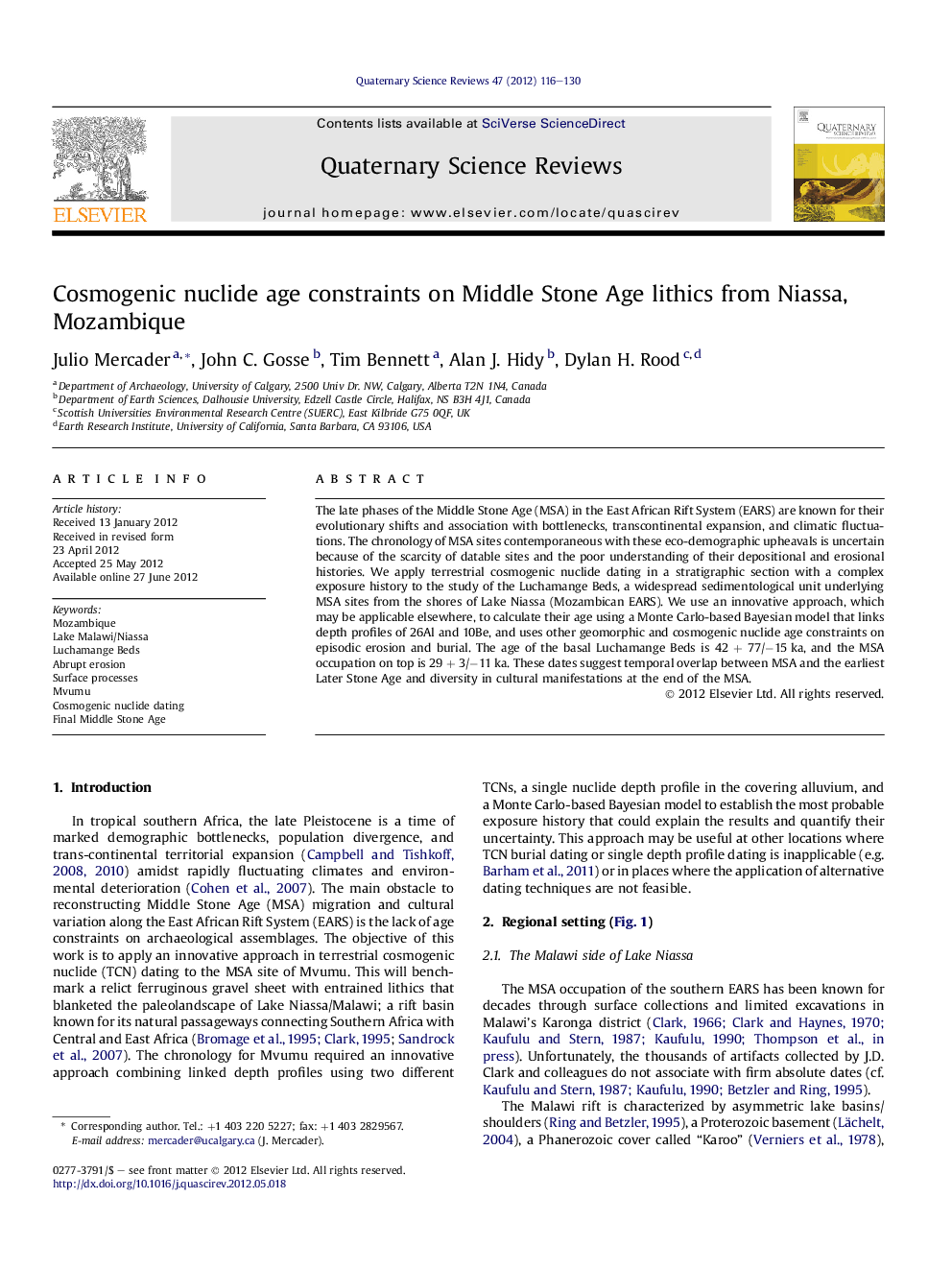| Article ID | Journal | Published Year | Pages | File Type |
|---|---|---|---|---|
| 4735743 | Quaternary Science Reviews | 2012 | 15 Pages |
The late phases of the Middle Stone Age (MSA) in the East African Rift System (EARS) are known for their evolutionary shifts and association with bottlenecks, transcontinental expansion, and climatic fluctuations. The chronology of MSA sites contemporaneous with these eco-demographic upheavals is uncertain because of the scarcity of datable sites and the poor understanding of their depositional and erosional histories. We apply terrestrial cosmogenic nuclide dating in a stratigraphic section with a complex exposure history to the study of the Luchamange Beds, a widespread sedimentological unit underlying MSA sites from the shores of Lake Niassa (Mozambican EARS). We use an innovative approach, which may be applicable elsewhere, to calculate their age using a Monte Carlo-based Bayesian model that links depth profiles of 26Al and 10Be, and uses other geomorphic and cosmogenic nuclide age constraints on episodic erosion and burial. The age of the basal Luchamange Beds is 42 + 77/−15 ka, and the MSA occupation on top is 29 + 3/−11 ka. These dates suggest temporal overlap between MSA and the earliest Later Stone Age and diversity in cultural manifestations at the end of the MSA.
► A 29 ka record for the final Middle Stone Age from Lake Niassa, Mozambique. ► An innovative approach to cosmogenic nuclide dating. ► A quantitative techno-typological study of quartz stone tools. ► Temporal overlap between Middle and Later Stone Age.
